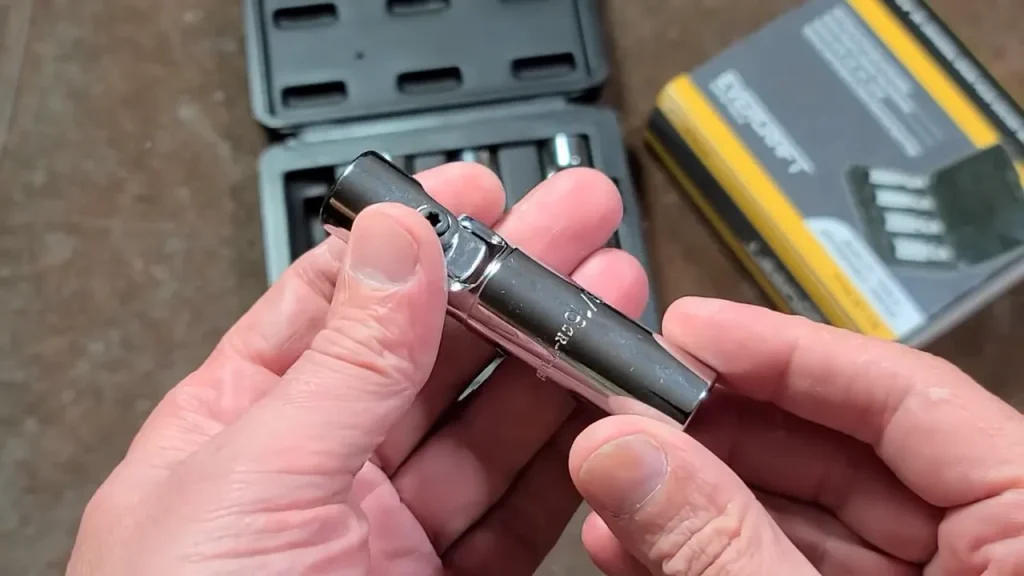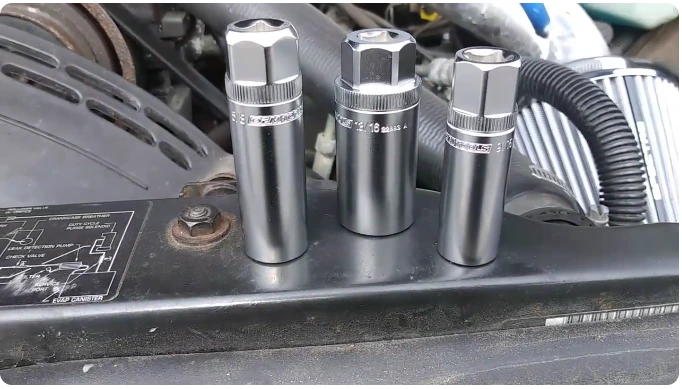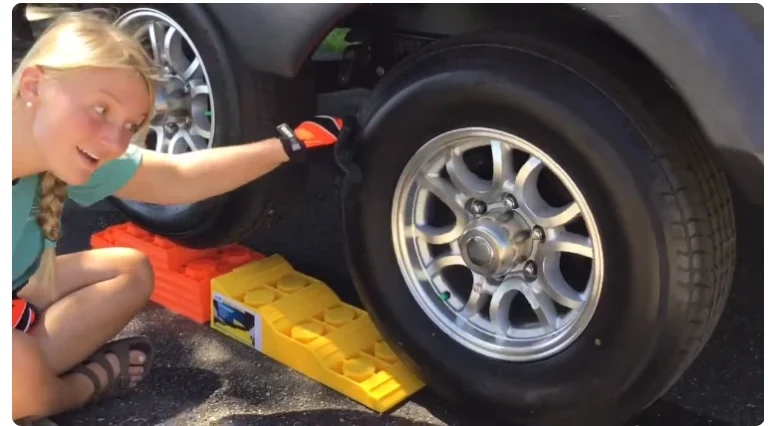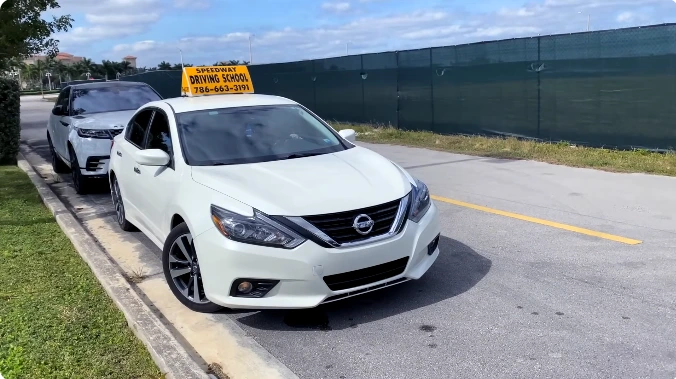What Size Socket Is a Spark Plug? [With FAQ]
Spark plugs play a crucial role in the efficient combustion of fuel in an internal combustion engine. As a key component responsible for igniting the air-fuel mixture, spark plugs require periodic maintenance and replacement to ensure optimal engine performance. One common question that arises during this process is, “What size socket is a spark plug?”
Choosing the correct socket size is essential when removing or installing spark plugs. It ensures a secure grip, preventing damage to the delicate threads and electrodes while maintaining the integrity of the spark plug itself. While there is a wide range of socket sizes available, finding the precise fit for your spark plugs is vital.
In this article, we will delve into the various socket sizes associated with spark plugs. We’ll explore the factors that determine socket size, the most commonly used sizes for different vehicles, and how to identify the right socket size for your specific spark plugs.
By the end, you’ll be equipped with the knowledge needed to confidently select the appropriate socket size for your spark plug maintenance tasks.
Spark Plug Socket Sizes
Socket size terminology and measurement
Socket size is typically measured across the flats, which refers to the distance between the opposite sides of the socket’s hexagonal opening. The most common socket sizes for spark plugs are expressed in inches and millimeters. For example, a 5/8 inch socket has a hexagonal opening that measures 5/8 of an inch across the flats, while a 16mm socket has an opening that measures 16mm across the flats.
Factors influencing socket size selection
1. Vehicle make and model
Different vehicles may have different spark plug sizes and designs. It’s important to refer to the vehicle’s owner manual or a reliable source to determine the correct socket size for the specific make and model.
2. Spark plug type and design
Spark plugs come in various designs, including different thread sizes, hex sizes, and electrode configurations. Some may require a specific socket size that matches their unique specifications. Always check the spark plug manufacturer’s recommendations for the correct socket size.
3. Socket compatibility with the wrench or ratchet
The socket needs to be compatible with the wrench or ratchet being used. Make sure the socket fits securely onto the wrench or ratchet drive mechanism to avoid slipping or damaging the socket.
Importance of using the right socket size
Using the correct socket size is crucial for several reasons:
1. Proper fitment
The right socket size ensures a snug fit on the spark plug, allowing for effective installation or removal without causing damage to the spark plug or the socket itself. Using an incorrect size can result in stripped threads, rounded edges, or other damage.
2. Safety
A well-fitting socket reduces the risk of slippage during spark plug installation or removal. This helps prevent injuries to yourself or damage to other components in the engine bay.
3. Efficiency
Using the right socket size improves the efficiency of the task by making the process smoother and easier. It reduces the chances of struggling with a loose or ill-fitting socket, saving you time and effort.
4. Longevity
Properly-sized sockets experience less wear and tear compared to sockets forced onto spark plugs. Using the correct socket size helps maintain the longevity of both the socket and the spark plug.
Commonly Used Socket Sizes for Spark Plugs
The most commonly used socket sizes for spark plugs are 5/8 inch (16mm) and 13/16 inch (21mm). These sizes are widely used for standard spark plugs found in most vehicles. Here’s a breakdown of the common socket sizes:
1. 5/8 inch (16mm): This socket size is the most common and fits the majority of spark plugs. It is suitable for standard spark plugs used in most vehicles.
2. 13/16 inch (21mm): This socket size is typically used for larger spark plugs found in some trucks or high-performance engines. It is slightly larger than the 5/8 inch size and provides a snug fit for these larger spark plugs.

Identifying the Correct Socket Size
To identify the correct socket size for a spark plug, you can follow these steps:
1. Consult the vehicle manual
The first step is to refer to the vehicle’s owner manual. It often provides information about the spark plug size and the recommended socket size for your specific make and model.
2. Check the spark plug itself
Look closely at the spark plug and locate any markings or numbers. Some spark plugs have the socket size imprinted on the ceramic insulator or the metal shell. It may be indicated as a metric size (in millimeters) or an imperial size (in inches).
3. Use a spark plug socket set
If you have a spark plug socket set, it usually includes a range of socket sizes to cover different spark plug types. Try different socket sizes from the set and see which one fits the spark plug snugly. Ensure that the socket fully engages with the spark plug and does not slip or wobble.
4. Seek professional advice
If you are unsure about the correct socket size or if you don’t have access to the necessary resources, it’s best to consult a professional mechanic or an automotive parts store. They have the expertise and knowledge to help you identify the correct socket size for your spark plugs.
Tips for Using Spark Plug Sockets
Here are some tips for using spark plug sockets effectively:
1. Choose the right socket size: Ensure that you have the correct socket size for your specific spark plugs. Refer to the vehicle manual or consult a reliable source to determine the appropriate socket size.
2. Use a quality spark plug socket: Invest in a high-quality spark plug socket that is designed for durability and proper fitment. Avoid using sockets that are worn, damaged, or of poor quality, as they can slip, round off the spark plug, or cause other issues.
3. Ensure a snug fit: When inserting the socket onto the spark plug, make sure it fits securely and snugly. This helps prevent slippage and ensures proper engagement.
4. Attach to a compatible wrench or ratchet: Use a wrench or ratchet with a drive size that matches the spark plug socket. Ensure a secure connection between the socket and the wrench or ratchet to prevent slipping during installation or removal.
5. Use extensions if needed: Depending on the accessibility of the spark plugs in your vehicle, you may need to use extensions to reach them. Ensure that the extensions are securely attached to both the socket and the wrench or ratchet.
6. Be cautious when loosening or tightening spark plugs: Apply even and controlled force when loosening or tightening the spark plugs. Avoid excessive force, as it can damage the spark plug or strip the threads in the cylinder head.
7. Check for stuck or seized spark plugs: If a spark plug feels stuck or seized, avoid applying excessive force. Instead, consult a professional mechanic who can use specialized tools or techniques to safely remove the spark plug without causing damage.
8. Clean the spark plug socket after use: After completing the spark plug installation or removal, clean the socket to remove any debris or residue. This helps maintain the socket’s functionality and prevents contamination during future use.
FAQ:
Q: What size socket is a spark plug?
A: The socket size for a spark plug can vary depending on the make and model of the vehicle, as well as the type of spark plug being used. However, the most commonly used socket sizes for spark plugs are 5/8 inch (16mm) and 13/16 inch (21mm).
Q: How do I determine the socket size for my spark plug?
A: There are a few ways to determine the socket size for your spark plug:
1. Consult the vehicle manual: The vehicle manual often provides information about the recommended socket size for your specific make and model.
2. Check the spark plug itself: Look closely at the spark plug and locate any markings or numbers. Some spark plugs have the socket size imprinted on the ceramic insulator or the metal shell.
3. Use a spark plug socket set: If you have a spark plug socket set, try different socket sizes from the set and see which one fits the spark plug snugly. Ensure that the socket fully engages with the spark plug and does not slip or wobble.
Q: Can I use a different size socket for my spark plug?
A: It is not recommended to use a socket that does not match the correct size for your spark plug. Using the wrong socket size can result in poor fitment, slippage, and potential damage to the spark plug or socket. It is best to use the socket size specified by the vehicle manufacturer or the spark plug manufacturer.
Q: Are there any specialty spark plugs that require a different socket size?
A: Yes, there are some specialty spark plugs that may require a different socket size. These could include unique designs, such as extended reach spark plugs or certain high-performance spark plugs. In such cases, it is important to refer to the spark plug manufacturer’s recommendations for the correct socket size.
Q: Can I use a universal socket for spark plugs?
A: Universal sockets are not recommended for spark plugs. Spark plug sockets are specifically designed with a rubber or magnet insert to securely hold the spark plug during installation or removal, preventing damage to the spark plug. Universal sockets may not have this feature, leading to a higher risk of slippage or damage to the spark plug.
Q: What if I can’t find the correct socket size for my spark plug?
A: If you are unable to determine the correct socket size for your spark plug, it is advisable to consult a professional mechanic or an automotive parts store. They have the expertise and knowledge to help you identify the correct socket size for your specific spark plugs and vehicle.




